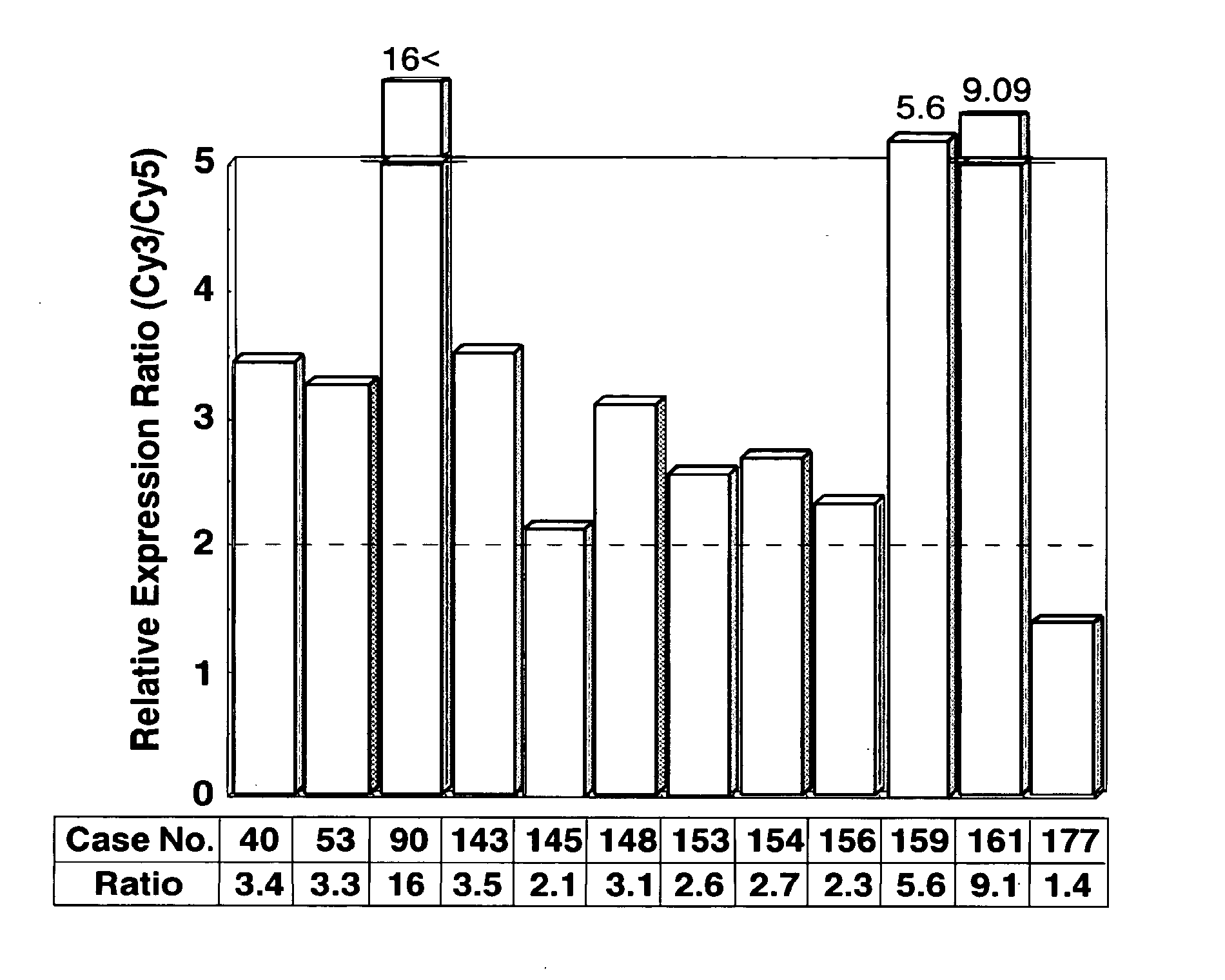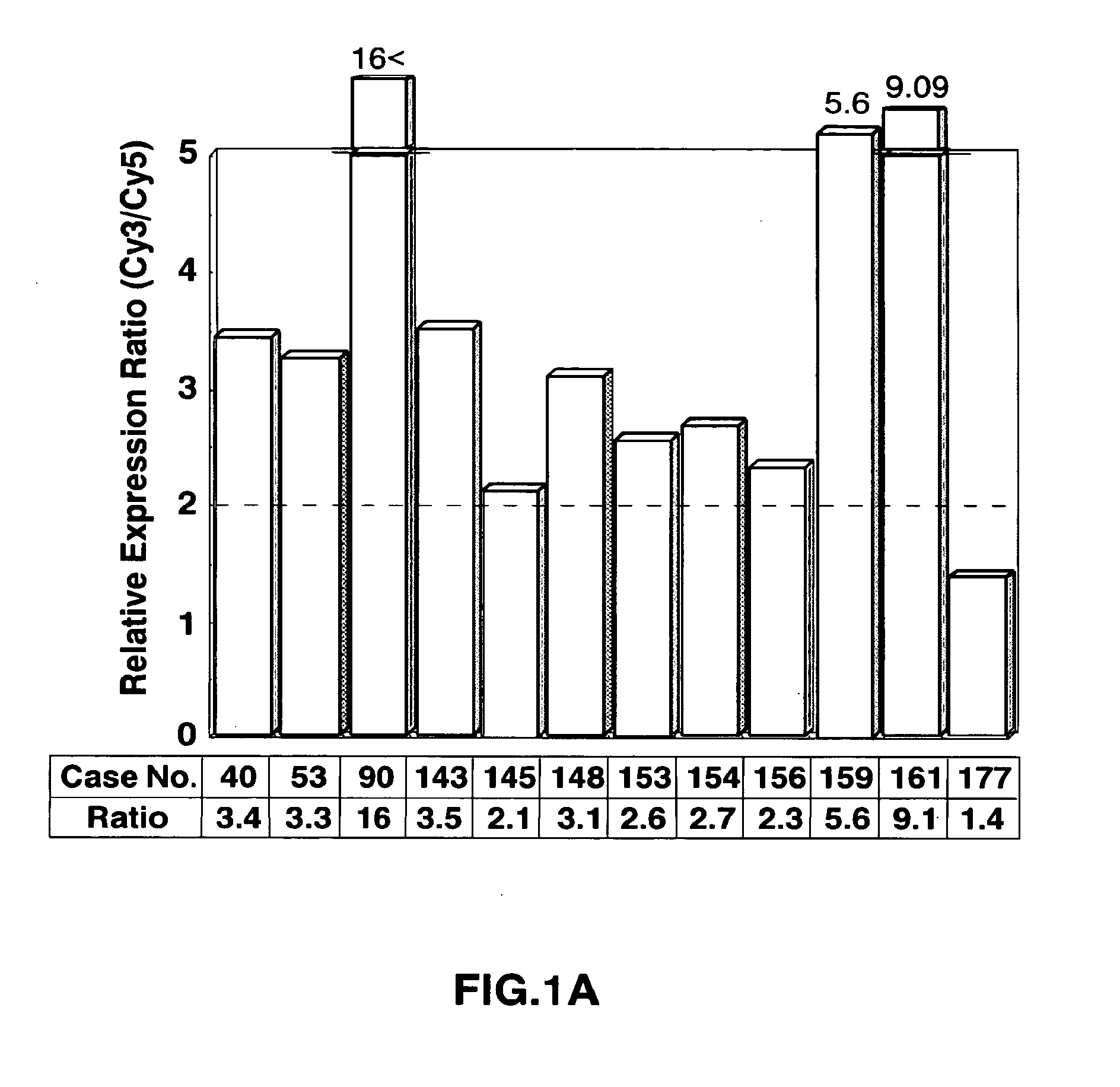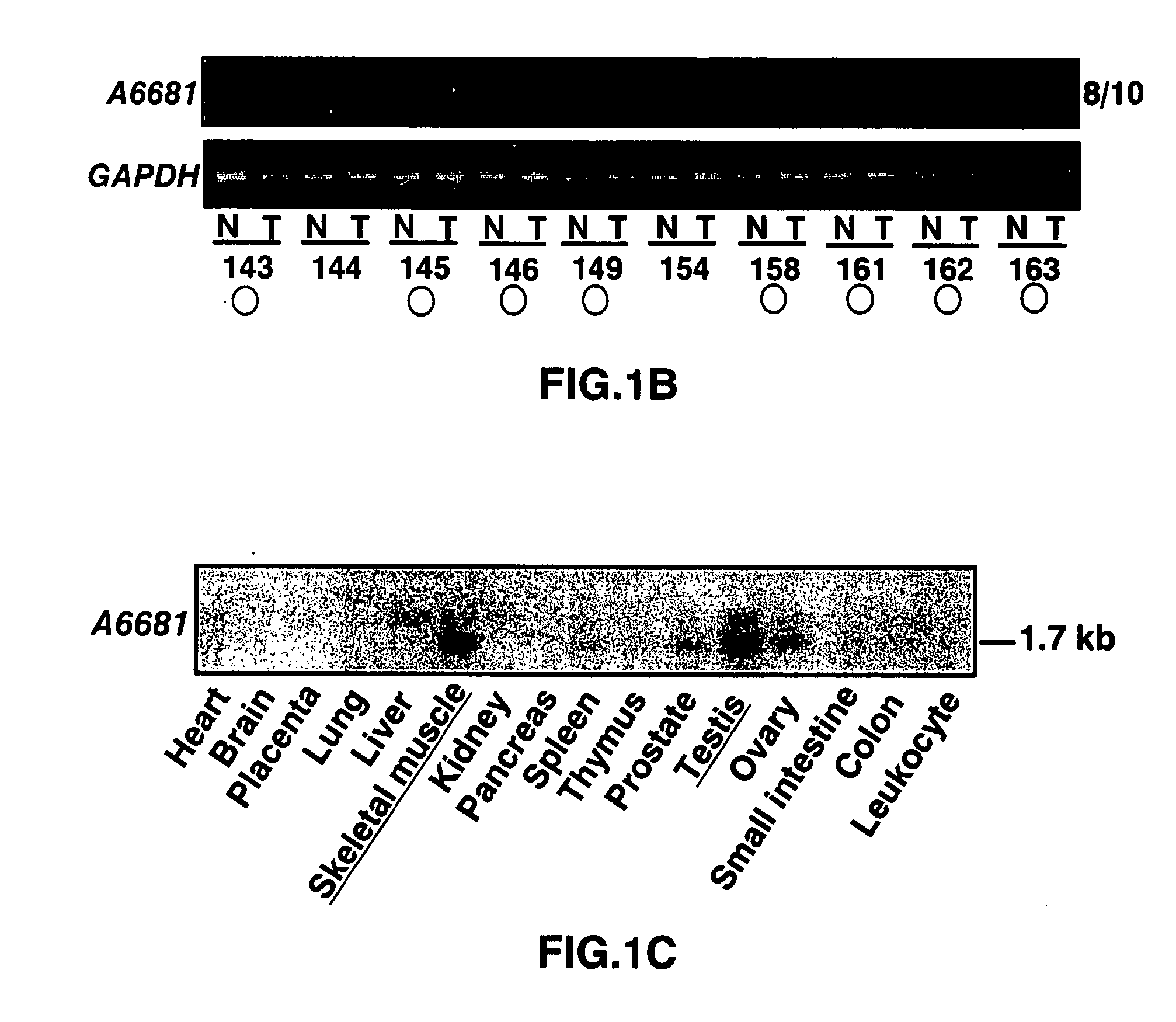Gene and protein relating to hepatocellular carcinoma and methods of use thereof
a technology of hepatocellular carcinoma and gene and protein, applied in the field of biological science, can solve the problems of high risk of hccs and difficult cures to complete cancer cures, and achieve the effect of enhancing the transcription of target genes
- Summary
- Abstract
- Description
- Claims
- Application Information
AI Technical Summary
Benefits of technology
Problems solved by technology
Method used
Image
Examples
example 1
General Methods
Cell Lines and Tissue Specimens
[0189]Human hepatoma cell lines Huh7, Alexander, and HepG2, human colon cancer lines HCT116 and SW948, human cervix cell line HeLA, mouse fibroblast cell line NIH3T3 and monkey fibroblast cell line COS 7 were obtained from the American Type Culture Collection (ATCC). In example 11, human hepatoma cell line Huh7 was also obtained from Japanese Collection of Research Bioresources (JCRB). Human hepatoma cell lines, SNU398, SNU423, SNU449 and SNU475 were obtained from the Korea cell-line bank. All these cells are publicly available.
[0190]All cell lines were grown in monolayers in appropriate media: Dulbecco's modified Eagle's medium for Alexander, Huh7, HepG2, NIH3T3 and COS 7; Eagle's Minimum Essential Medium for HeLa; McCoy's 5A for HCT116; Leibovitz's L-15 for SW948; RPMI1640 for SNU398, SNU423, SNU449 and SNU475 supplemented with 10% fetal bovine serum and 1% antibiotic / antimycotic solution (Sigma). All cells were maintained at 37° C. in...
example 2
Identification of a Novel Gene Frequently Up-Regulated in HCCs
[0205]Using genome-wide cDNA microarray with 23040 genes, we identified an expressed sequence tag (EST), which was commonly up-regulated in hepatitis B-positive and / or hepatitis C-positive HCCs. Among them, we focused on a gene, A6681, corresponding to an EST (Hs. 8109), because its expression was significantly up-regulated in eleven of twelve (91.7%) clinical HCCs compared with the corresponding noncancerous liver tissues (FIG. 1A). The elevated expression of the gene A6681 was also confirmed in another 10 HCC cases by RT-PCR (FIG. 1B). The relative expression confirmed by semi-quantitative RT-PCR were well correlated to those confirmed by cDNA microarray.
example 3a
Isolation and Characterization of a Novel Human Gene, ZNFN3A1
[0206]Multi-tissue northern blots from Clonetech were used to hybridize a 32P labeled partial A6681 cDNA with an approximately 1.7-kb transcript expressed in testis and skeletal muscle purchased from Clontech. (FIG. 1C) The A6681 probe was prepared by RT-PCR using a set of primers, 5′-TTCCCGATATCAACATCTACCAG-3′ (SEQ. ID. NO. 32) and 5′-AGTGTGTGACCTCAATAAGGCAT-3′(SEQ. ID. NO. 33). Pre-hybridization, hybridization and washing were performed according to the supplier's recommendations. The blots were autoradiographed with intensifying screens at −80° C. for 24 h. The approximately 1.7 kb polynucleotide transcript was termed the ZNFN3A1 gene.
[0207]The sequence of the 5′ region of the transcript was determined by 5′ rapid amplification of cDNA ends (5′RACE) which was performed using the Marathon cDNA amplification kit by Clontech in accordance with the manufacturer's instructions. For the amplification of the 5′ part of ZNFN3A1...
PUM
| Property | Measurement | Unit |
|---|---|---|
| temperature | aaaaa | aaaaa |
| temperature | aaaaa | aaaaa |
| weight | aaaaa | aaaaa |
Abstract
Description
Claims
Application Information
 Login to View More
Login to View More - R&D
- Intellectual Property
- Life Sciences
- Materials
- Tech Scout
- Unparalleled Data Quality
- Higher Quality Content
- 60% Fewer Hallucinations
Browse by: Latest US Patents, China's latest patents, Technical Efficacy Thesaurus, Application Domain, Technology Topic, Popular Technical Reports.
© 2025 PatSnap. All rights reserved.Legal|Privacy policy|Modern Slavery Act Transparency Statement|Sitemap|About US| Contact US: help@patsnap.com



